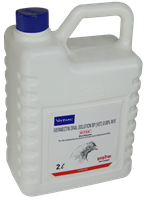
Dewormer for dogs and cats- why is it important to deworm them
Dewormer for dogs and cats- why is it important to deworm them
Deworming dogs and cats is a public health issue. Dog or cat digestive parasites can indeed threaten human health. Studies show that at least 5% of individuals have been in contact with roundworms*.
Deworming gets dogs and cats rid of parasites that they harbour in their digestive tract. City or countryside pets, all are concerned.
Each parasite develops according to a particular cycle. In general, a dog or cat gets infected when consuming an animal itself parasitized (rodents, fleas, slugs…), or by swallowing the eggs of parasites that it has rejected in its stools.
-
Round worms
The most common are roundworms.
Puppies and kittens are generally infected with these parasites from birth. Roundworms live in the digestive tract where they lay eggs that are rejected in stool: these eggs can survive 2 years outdoors before being accidentally ingested by a dog or a cat (or a child) !
- Flat worms
Tapeworms are flat worms that can reach up to 60cm long! The most common flatworm in dogs and cats is Dipylidium caninum. This parasite is transmitted by fleas.
Roundworms can cause serious disorders in puppies and kittens: diarrhea, vomiting, intestinal obstruction, growth stunting… Symptoms are less apparent in adult animals, but a large parasitism always causes a decline in the general condition.
Fleas transmit internal parasites to dogs and cats. Deworming and flea treatment must therefore be tackled head-on.
The optimal frequency of treatment depends on the age and the parasite pressure that is exerted on your dog / cat. A quarterly treatment is usually recommended in adult pets, but your vet will give you the adapted deworming protocol for your pet.
* Farmer A, Beltran T, Choi YS. Prevalence of Toxocara species infection in the U.S.: Results from the National Health and Nutrition Examination Survey, 2011-2014. PLoS Negl Trop Dis 2017; 31; 11: e0005818.






.png)